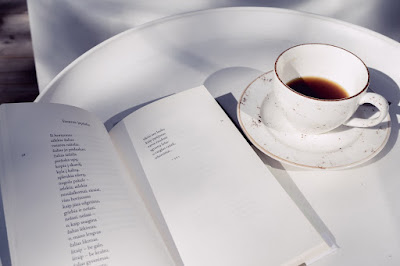IB Poetry Analysis: Definitions
Rhyme scheme: When analysing poetry in the IB, its super common to refer to the rhyme structure of certain pieces using bundled up letters like ABAB CDCD or ABBA, and this can be confusing if you aren't familiar. To find the rhyme scheme, we are going to be looking at the sounds at the end of each line.
For example:
I do not like green eggs and ham.
I do not like them Sam I am.
I do not like them in a boat.
I do not like them with a goat.
- Green Eggs and Ham, Dr. Seuss
When you pay attention to the sound at the ending of the line, you may notice a pattern: ham rhymes with am and boat rhymes with goat. Therefore, this follows the rhyme scheme of AABB (ham/am/boat/goat)
An example of a more hidden rhyme scheme could be:
Bid me to weep, and I will weep,
While I have eyes to see;
And having none, yet I will keep
A heart to weep for thee.
If you apply the same knowledge to this his rhyme scheme is ABAB (weep/see/keep/thee)
Pastoral poem: uses the simplistic, romantic way to describe the lives of people living on the countryside, commonly referring to religious themes and glorifying the non-urban lifestyle
Thesis: one of the most important parts of your analysis of any text is your thesis. In an analysis, you NEED to have an argument so the reader knows what you're trying to prove. If I say "the themes of light and darkness act to ----- in order to deliver the message of --------", I am arguing that this is the author's purpose in writing the text itself. It's about why the author has written the text your reading, in other words called an analysis.
Stylistic devices: stylistic devices are techniques used by the writer of a poem or text which are used to deliver the author's overall message. Here are the steps for talking about a specific stylistic device and why its important to identify them:
1. Identify the device:
When reading a poem about life, for instance, you may notice that it doesn't have any full stops or commas at the end of each line (this is known as enjambment).
2. What does the device do for the reader:
you could argue that the author wants you to feel as if the text is fast-paced and holds a sense of continuity, no matter the matter being dealt with in the text.
3. Why is the device there is the first place:
With the knowledge of what this stylistic device makes you feel, you have to find what is the underlying message behind making you feel this way. You could argue with this same example that the 'sense of continuity' developed through using enjambment is meant to argue about how life always continues, no matter what happens.
1. Identify the device:
When reading a poem about life, for instance, you may notice that it doesn't have any full stops or commas at the end of each line (this is known as enjambment).
2. What does the device do for the reader:
you could argue that the author wants you to feel as if the text is fast-paced and holds a sense of continuity, no matter the matter being dealt with in the text.
3. Why is the device there is the first place:
With the knowledge of what this stylistic device makes you feel, you have to find what is the underlying message behind making you feel this way. You could argue with this same example that the 'sense of continuity' developed through using enjambment is meant to argue about how life always continues, no matter what happens.
https://crossref-it.info/articles/190/pastoral-poery-in-brief
----------------------------
Thanks for getting to the end of this article! If you want to see more about anything within the IB, subscribe to this website using the menu on the right to receive updates for when I upload my next post and comment on my posts! If you’re just swinging by, check back here every couple of days for a new upload :)




Comments
Post a Comment